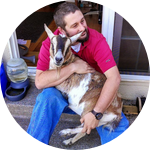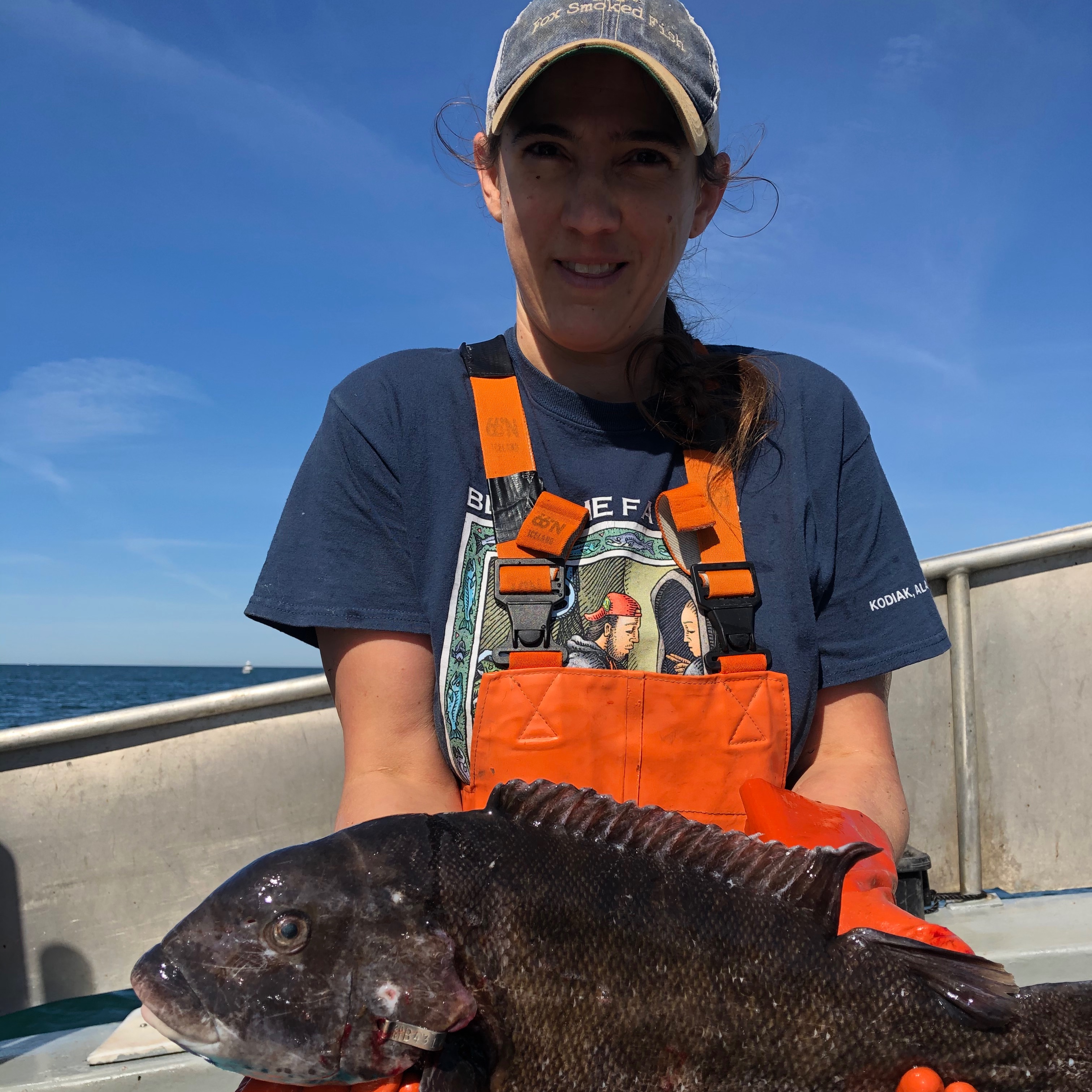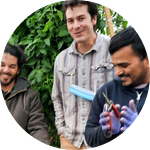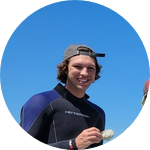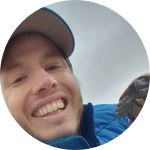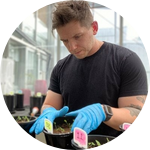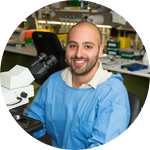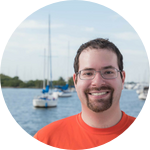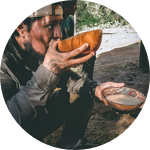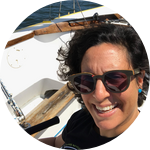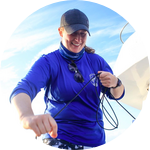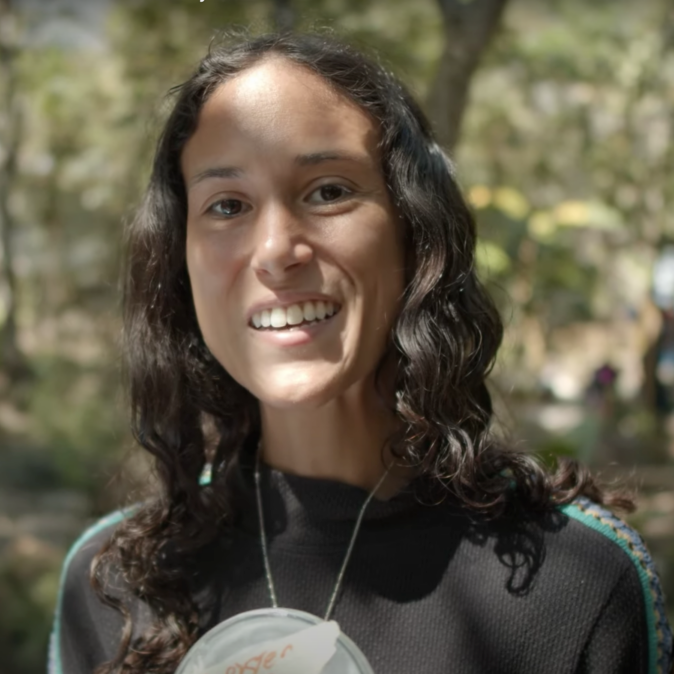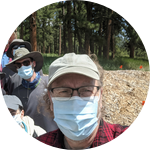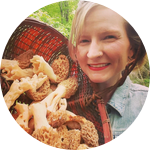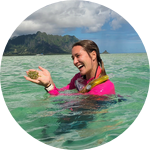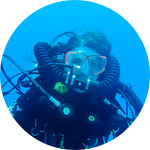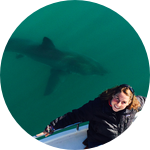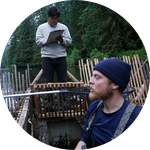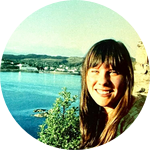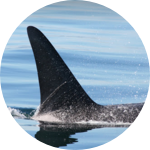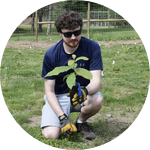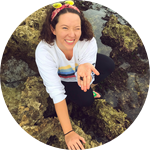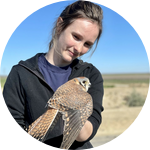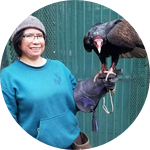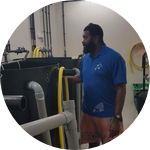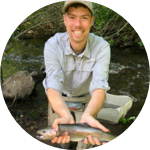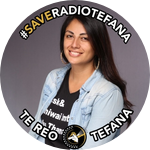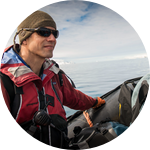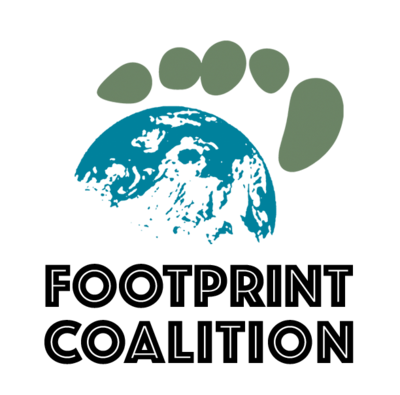
Footprint Coalition
We are a coalition of investors, donors, and storytellers committed to scaling technologies to restore our planet.
Projects
94
How carbon sequestration is modulated by Mycorrhizal and soil bacteria symbionts in Abies trees?
Mycorrhizal communities are a fundamental mutualistic interaction between soil fungi and trees. However...
Measuring CO2 mineralization rates in a simulated ocean environment for the characterization of low-cost sensors
Direct air capture (DAC) of CO2 is a technology for low-cost and scalable carbon dioxide removal (CDR...
Are deep-sea metals powering bioelectrical eco-evolution?
The deep sea is enriched with metals and amazing life forms. Electroactive microbes can get energy from...
An Open Source Seawater Carbonate Analyzer for the Citizen Scientist
Measuring carbon dioxide parameters in seawater is crucial for understanding the impacts carbon dioxide...
Can cycling help clean up microplastics from beaches and conserve coastal ecosystems?
Our team is developing a microplastic removal machine to filter and strain contaminated sand effectively...
Establishing the first technological network for long term ocean observations in Costa Rica
Costa Rica lacks extended time series of oceanographic data. To address this issue, our goal is to deploy...
What can environmental DNA tell us about California's marine biodiversity?
A new molecular tool that identifies marine species from genetic material in water—“environmental DNA...
Establishing a baseline for microplastic accumulation in deep-sea animals using an historical sample archive
The deep sea is recognized as a hotspot for microplastic accumulation. While we are beginning to understand...
Improving the Knowledge of Skates and Rays in Trinidad and Tobago
Trinidad and Tobago is home to many species of skates and rays but exactly how many and their locations...
How can white-rot fungi transform agro-industrial waste ?
France and Europe's first agricultural region, Nouvelle Aquitaine, generates an excessive flux of lignocellulosic...
Searching for threatened waxcap fungi
‘Waxcap’ fungi of the tribe Hygrocybeae are a good indicator of environmental health due to their specific...
Super Slime Me: A Month of Living on an All Algae Diet
This study examines the effects of consuming only algae as a dietary source for a month. The subject, a...
Participatory research to explore fungal biodiversity and its importance to bees
Of the millions of fungal species, less than 150,000 are known. At our community lab, Hackuarium, we have...
Kelp Forest Restoration and Monitoring using Community Science
Since 2014, more than 96% of bull kelp in Northern California has been lost due to a combination of stressors...
A low-cost open-source audio-video array to identify fish sounds.
Many fish produce sounds that could be used to monitor them non-intrusively over long periods of time...
What kinds of supports are needed to enable a transition to a low-carbon US commercial fishing fleet?
The urgency of climate change and record-high diesel fuel prices are motivating commercial fishermen to...
Improving Soil Health with Oyster Industry "Waste"
Agricultural soils in The Gambia, West Africa, are highly acidic, which greatly reduces plant growth and...
Where are Rhode Island's Remaining Native Oysters?
Natural Oyster abundance in Rhode Island has been declining and is in need of a restoration plan. In collaboration...
Can a low-cost camera system help conserve the deep-sea biodiversity of Ticao-Burias Pass (Philippines)?
The Manta Bowl is a seamount located within the second largest protected seascape in the Philippines. Due...
When do the corals in our reefs spawn?
The timing when corals release their eggs and sperm to reproduce is an extremely complex topic. However...
Microplastic Monitoring Network in Islands and Coastal Zone
The coast of Santa Catarina represents 7% of the Brazilian coast and contains 6 areas relevant to conservation...
Using eDNA in Quest to Rediscover Zug’s Monitor Lizard: a Top 25 Most Wanted Lost Species
Sometimes extinction isn’t forever, it just takes the right team to discover what others could not. The...
Magnets as blue shark deterrents?
Blue sharks (Prionace glauca) are the most commonly caught species of shark globally. They are usually caught...
Using eDNA to unveil the anchialine ecosystem
Welcome to the coolest ecosystem you've never heard of - the anchialine ecosystem! Anchialine habitats are...
How does agriculture in Australia impact the diversity of beneficial soil fungi?
Plants co-evolved with a group of soil fungi called arbuscular mycorrhizal fungi that support plant nutrient...
Testing Additive Profiles for Organic Carbon Capture
To stop the negative effects of climate change we need carbon capture technology to be developed and deployed...
Can we improve carbon capture in cyanobacteria with directed evolution?
Cyanobacteria are photosynthetic bacteria that convert CO₂ into oxygen using light. They are abundant in...
Identification and optimization of silica- and silicate-degrading enzymes for atmospheric CO2 removal
Rock weathering is a process whereby atmospheric CO2 reacts with silicate minerals, promoting formation...
New practicable, eco-friendly methods in the generation of sustainable transparent wood materials
Transparent wood (TW) is a lightweight, energy-efficient material engendering optical functionalities in...
Laser directed infrared spectroscopy to analyze microplastics down to 20 microns and speed up data analysis
Microplastic analysis is a very time-consuming procedure while smaller-sized plastics (<300 microns...
Harnessing New Technologies for Mapping Montserrat’s Marine Megafauna
In a first for the island, a locally-led initiative will survey Montserrat's marine environment, to identify...
Using drones to find ghost gear in Koh Phangan, Thailand & study the impacts on marine megafauna
Koh Phangan is situated in the Surat Thani Environmental Protected Area, a region of diverse marine wildlife...
What are Critically Endangered hammerhead sharks doing in the waters off Miami?
Great hammerhead sharks were recently assessed as Critically Endangered by the IUCN Red List. Our research...
Intuitions about Ownership Among Achuar Communities and the Misalignment of Intellectual Property Law
The ownership of knowledge is one of the most contested topics of our times, but little is known about how...
Can we use a smartwatch for coastal monitoring and research?
The best sensor is the one you’re already wearing. Smartwatches contain sensors already used by scientists...
Genetic engineering of fungi for next generation sustainable tools
Anthropogenic influence on the Earth has had a negative effect. We need to create a sustainable way of living...
Increasing Sustainable Kelp Farmers' Yields With an Automated Twine Wrapping Device
In response to the climate crisis and fears of food insecurity, regenerative kelp farming is emerging as...
Are climate change and air pollution triggering cardiovascular disease?
Ongoing global climate change and air pollution emissions pose a major threat to cardiovascular health...
Exploring material properties and fabrication processes of a mycelium based surfboard
The modern surfboard comprises layers of unrecyclable plastic which often break and pollute our oceans...
How does urea loss through gills vary by shark species?
Sharks use solutes, such as urea, to prevent cellular water loss. While the mechanisms of urea retention...
Is mycelium clay a suitable replacement for large scale gypsum polymer structures?
Myco-composites are sustainable and renewable alternatives to toxic petroleum plastics but require monitored...
Sequencing the genome of a lost ladybug
The introduction of non-native lady beetles into North America led to the disappearance of several once...
Studying the World's Largest Invertebrate - the Colossal Squid, Mesonychoteuthis hamiltoni
We are launching a multi-year expedition to film a colossal squid in the deep sea for the first time off...
Improving the qualitative properties of mycelium skins through fungal-bacterial biocomposites
Farming animals for leather is a water, chemical, and energy-intensive process. Fungal "leather" could...
Increasing the bioavailability of carbohydrates through the interface of mycology and fermentation
Due to increasing reliance on grain as a source of carbohydrates, shortages can occur if supply is interrupted...
Can we produce composite leather by biodegrading textile waste, using mycelium?
Can textile waste be repurposed and recycled as a raw material for the growth of mycelium leathers? Textile...
Can we identify spawning events in deepwater snappers and groupers?
Nearshore deepwater fisheries are expanding in the Caribbean as coastal fisheries decline. Because deepwater...
What is the known diversity of Somali waters?
During Somalia’s 30-year-long civil war, my country lost many of our marine scientists. Now, Somalia lacks...
Carbon sequestration potential of fungally produced composts
Our previous study on the decay of forest waste products found that the compost produced by wild fungi holds...
Can we hear how mycelia communicate?
Mycelial networks are the root like structures of fruiting body mushrooms. Spontaneous electrical low-frequency...
Using citizen science to gather data to inform sea turtle conservation in Trinidad and Tobago
All 5 sea turtle species in T&T are considered globally Threatened by the IUCN. Effective conservation...
Could Hawaii seagrasses be facing extinction?
Seagrass meadows are vital for the health of the ocean because of their ability to absorb carbon from the...
What values will support collaboration in cellular agriculture?
Cultivated meat could help secure global protein demand without animal slaughter and reduced environmental...
Do deepwater corals eat microplastics?
We aim to provide the first report of microplastic presence (or absence) in deepwater corals. Deepwater...
Adapting genetic technology for marine conservation
Protecting the ocean's biodiversity is essential for the health of the planet and communities. Marine Protected...
Creating a cotton trichome cell line to grow cotton fibers without relying on the cotton plant
Growing cotton fibers through cellular agriculture would consume a negligible amount of water, not require...
Mapping the Humpback whale genome
Humpback whales were hunted to near extinction until whaling was banned in 1963. Population recovery is...
How low cost agriculture waste material can be used to support lab-grown meat production?
Imagine a world in which animal cells are grown in laboratories to produce meat for human consumption. As...
Are sharks contributing to salmon declines in the Pacific Northwest?
Many research and conservation efforts are dedicated to managing species like salmon, and these often try...
Powering Indigenous-led salmon stewardship with machine learning
Wild salmon are central to cultures & ecosystems in British Columbia but are under unprecedented climate...
Sustainable bio-mining of rare Earth elements utilizing microorganism biotechnology
Rare Earth Elements (REE) are highly sought after for their powerful magnetic properties and energy efficient...
Can a rabies vaccination booster save African Wild Dogs?
Rabies is one of the greatest threats to the continued survival of the African wild dog (Lycaon pictus...
Can green fluorescent protein expression be modified by use of CRISPR/Cas9 genome modifying tools?
Coral use green fluorescent protein (GFP) emissions to attract algal symbionts that provide energy to the...
Using community science to evaluate the intersection of social, racial, and economic injustices in North Birmingham, AL
Environmental injustices differentially impact low wealth communities of color, and this pattern of inequity...
How do bacteria respond when humans damage caves?
The Tongass National Forest in Alaska contains both damaged and undamaged caves. These caves are homes to...
Understanding seal behavior with artificial intelligence
Seals are important indicators for the health of our oceans, but it is often difficult to monitor their...
Can low-cost, DIY hydrophones identify orca matrilines in real-time?
At Orcasound, we use underwater microphones (hydrophones) to monitor and conserve the endangered orcas that...
Can RNAi be used to reduce the virulence of the pathogens of American chestnut?
The American chestnut (Castanea dentata) was once an important member of the Appalachian ecosystem but was...
Using genetics to assess spatiotemporal variations in recruitment of native and introduced mullet in Kaneʻohe Bay, Oʻahu
Native mullets (ʻamaʻama) are vital to Hawaiian aquaculture. In Kāne‘ohe Bay, yearly recruit abundance is...
Can we produce plant protein fibers to emulate whole cut cultured meat?
Meeting the meat demands of a growing population is increasingly difficult and is harmful to the environment...
Kumeyaay landscapes, knowledge transfer, and land stewardship in San Diego
The goal of this project is to leverage indigenous knowledge with geographic information systems (GIS) and...
Effects of marine pollution on Halophila hawaiiana
Halophila hawaiiana is a Native Hawaiian seagrass that creates a habitat relied on by many organisms. H...
Quantifying the soil microbiome of Indigenous managed land systems
Studies evaluating biodiversity on Indigenous lands do not consider microbial diversity. We aim to demonstrate...
Can Thailand be a hub for cultured protein production?
Demand for protein is growing in emerging economies fastest. Producing cultured protein (CP) is one approach...
Re-membering nuclear stories from a Maohi lens
Scientific and historical research on the 30 years of French nuclear tests in French-occupied Polynesia...
Investigating the diet of wintering American Kestrels in agricultural landscapes
American Kestrels in the US have declined by 50% in the last 50 years and scientists are struggling to understand...
Water quality monitoring in Sampson County, NC
Many residents in Sampson County, NC use private wells, and there is a high density of water hazards associated...
Improving Hawaii's endemic limpet population through novel biochemical techniques
'Opihi are a culturally important marine limpet found only within the Hawaiian Islands. Considered a delicacy...
How is this fish's diet key to coral reef conservation?
We study an abundant 'herbivorous' fish on Pacific coral reefs: the striated surgeonfish, Ctenochaetus striatus...
3D printing a steak with lab-grown cow cells
We want to make the perfect steak, without slaughtering cows.
What microbial partners help endangered vultures navigate a toxic world?
Wild animal microbiomes have received minimal research and we often don’t know what constitutes a "healthy...
Potential of the Rewa River oysters in enhancement of community livelihoods and resilience
Edible oysters are a traditional food item in coastal communities in Fiji. Despite this, little is known...
How will coldwater fish survive on a hot planet?
Freshwater fish account for a quarter of the world’s vertebrate species and are critical to maintaining...
Could newly discovered deep-water kelp forests in Galapagos act as climate change refuges?
Following the discovery of extensive deep-water marine forests made up of rare tropical kelp species in...
Low-cost monitoring of red tide and its viruses in the Philippines
HAB (harmful algal bloom/red tide) is a public health concern. Here, we are interested in the interaction...
Te Vaa Mataeinaa - Healthy Watersheds in Moorea
Te Vaa Mataeinaa - Tahitian for Watersheds - are critical to providing drinking water for people, nurturing...
Can corals acclimate to higher temperatures?
Urgent action is needed to protect coral reefs in the face of a changing climate. In Hawaiʻi, outflow from...
Characterizing the deep sea habitats of the Seychelles using new, affordable deep-sea technology
The deep sea makes up more than 90% of our ocean yet receives little attention due to poor access to technology...
Can ocean spray seed ice crystals in clouds?
It has been suggested that diatoms and other ocean biologics are transported to the atmosphere when waves...
Optimizing nitrogen loading in a micro nursery for nori
Edible seaweeds provide a sustainable source of healthy food and ecosystem services, including habitat for...
Tracking non-breeding endangered Benguela seabirds to inform conservation strategies
Cape Cormorants and Cape Gannets are Endangered seabirds that primarily feed on sardine and anchovy . Although...
Can we identify individual manta rays in real-time using AI and remote technology?
This project combines AI, high-resolution cameras, and existing manta behavior research to test a program...
Can we improve the survival of larval yellow tang by understanding its microbiome?
Yellow tang are vital to Hawaii’s reef ecosystems, but wild populations have been drastically declining...
Do humpback whales have lasting social bonds and long term relationships?
Humpback whales were once wrongly considered solitary. However, recent research has shown that they can...







